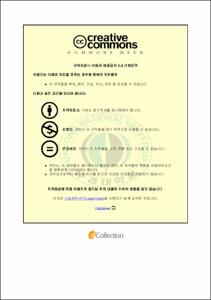남해안 양식산 멍게, Halocynthia roretzi의 물렁증 발생에 미치는 환경요인의 영향
- Abstract
- Although mass mortality due to tunic softness occurred in the aquaculture farm of Halocynthia roretzi (Drasche) in Korea since the latter part of the 1990’s, there is in adequate researches on this issue. This study investigated the phenomenon of manifestation of tunic softness in Halocynthia roretzi in accordance with the environmental factors including water temperature, salinity, dissolved oxygen and shortage of food that are imparting influence mainly on farmed marine species with particular focus on farmed Halocynthia roretzi.
Regarding the effect of water temperature, the low end of water temperature range for manifestation of tunic softness (35 days-LT50) was found to be 6.9℃(3.4∼22.5℃) while the high end of water temperature range (30 days-LT50) was found to be 21.2℃(16.7∼23.6℃). Morphological internal reaction displayed weakening of elasticity of areas around gills and muscles as well as change in color to yellow as tunic softness progressed, and blood lymph vesicle was exposed by condensation of epithelial cytolymph of branchial pouch and destruction of epithelial layer. Moreover, histological change of loss of cuticula layer in tunic was observed.
Regarding the effect of dissolved oxygen, lethal concentration of dissolved oxygen for 50% over 5-day period at the water temperature of 15±1℃ (5 day-LC50) was 4.84 ㎎/L (4.40-5.53 ㎎/L) and manifestation of tunic softness was not observed throughout the exposure to the above concentration of dissolved oxygen. Changes in key external morphological characteristics did not include morphological change in including medullary canal although phenomenon of shrinking and hardening of entire tunic was observed.
Regarding the effect of starvation, manifestation of tunic softness was not observed at the water temperature of 8℃ and 12℃ in the Halocynthia roretzi that survived 35 days of fasting Regarding the concentration ratio between RNA and DNA for each part of the species, the protein contents were found to be low in gill and hepatopancreas.
- Issued Date
- 2013
- Awarded Date
- 2013. 2
- Type
- Dissertation
- Publisher
- 부경대학교
- Affiliation
- 부경대학교 대학원
- Department
- 대학원 수산생물학과
- Advisor
- 김창훈
- Table Of Contents
- Ⅰ. 서론 1
Ⅱ. 재료 및 방법 3
1. 실험재료 3
2. 실험방법 4
Ⅲ. 결과 6
1. 수온변화에 대한 영향 6
1.1. 생존율 및 물렁증 발생률 6
1.2. 형태적 변화 8
1.3. 조직학적 변화 10
2. 염분변화에 대한 영향 13
2.1. 생존율 및 물렁증 발생률 13
2.2. 형태적 변화 14
2.3. 조직학적 변화 16
3. 용존산소 변화에 대한 영향 22
3.1. 생존율 및 물렁증 발생률 22
3.2. 형태적 변화 22
3.3. 조직학적 변화 24
4. 절식에 의한 영향 28
4.1. 생존율 및 물렁증 발생률 28
4.2. 형태적 변화 29
4.3. RNA/DNA 농도변화 31
4.4. 조직학적 변화 32
Ⅳ. 고찰 35
Ⅴ. 요약 39
참고문헌 41
감사의 글 47
- Degree
- Master
- Files in This Item:
-
-
Download
 남해안 양식산 멍게, Halocynthia roretzi의 물렁증 발생에 미치는 환경요인의 영향.pdf
기타 데이터 / 13.19 MB / Adobe PDF
남해안 양식산 멍게, Halocynthia roretzi의 물렁증 발생에 미치는 환경요인의 영향.pdf
기타 데이터 / 13.19 MB / Adobe PDF
-
Items in Repository are protected by copyright, with all rights reserved, unless otherwise indicated.